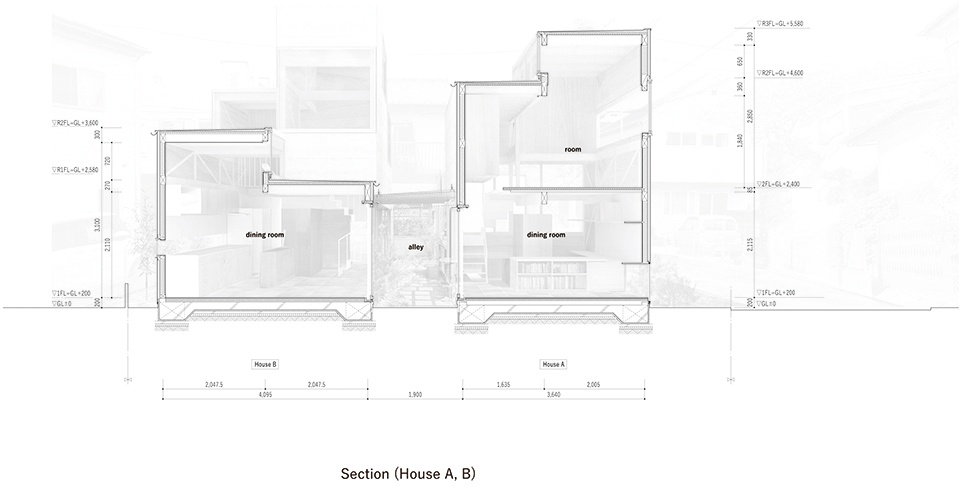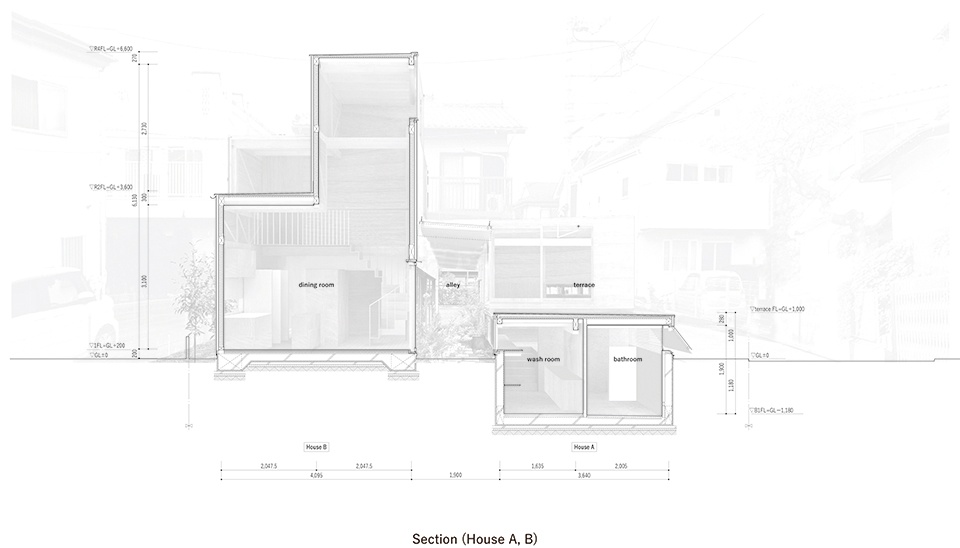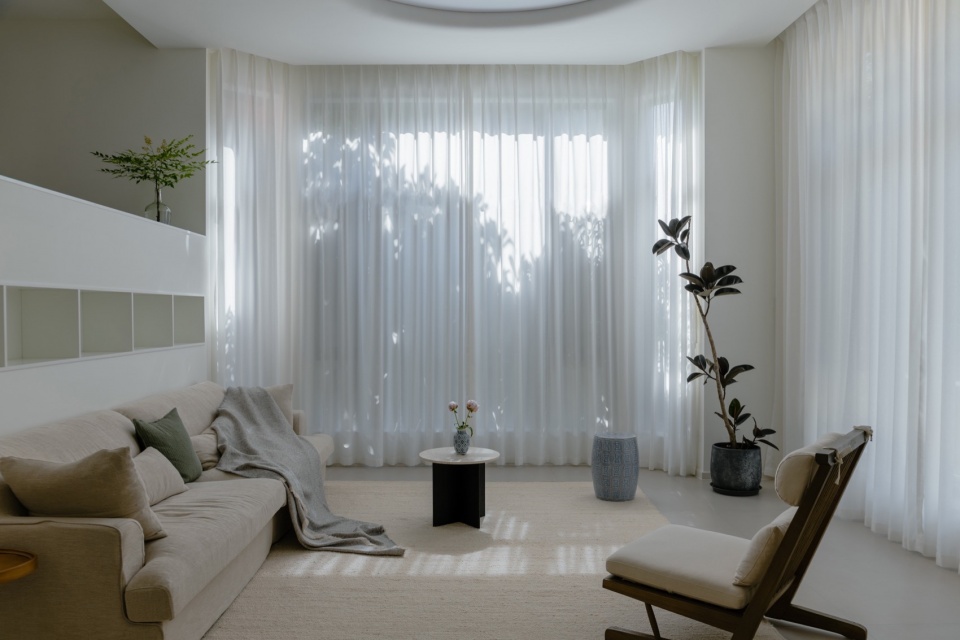

在东京某个绿意盎然的安静住宅区内坐落着两栋小住宅,一栋为建筑师的私宅,另一栋则是建筑师亲戚的家。两个家庭一方面想要保持各自独立的生活,同时也希望彼此支持,并希望能在本项目中为两个家庭创造出一个共同的空间,如花园和工作室等,这种愿景旨在实现一种新的生活方式,享受到一般独立的小家庭难以实现的扩张感。
There are two houses in a quiet residential area with verdant greenery. One is my own house and the other is my sister-in-law`s family. While the two families wanted to live independently, they also wished to support one another and desired to establish a common space such as a garden and atelier to enjoy a lifestyle that allows for a sense of expansion that is difficult to achieve as a single household.
▼住宅外观,exterior view of the houses © Kai Nakamura
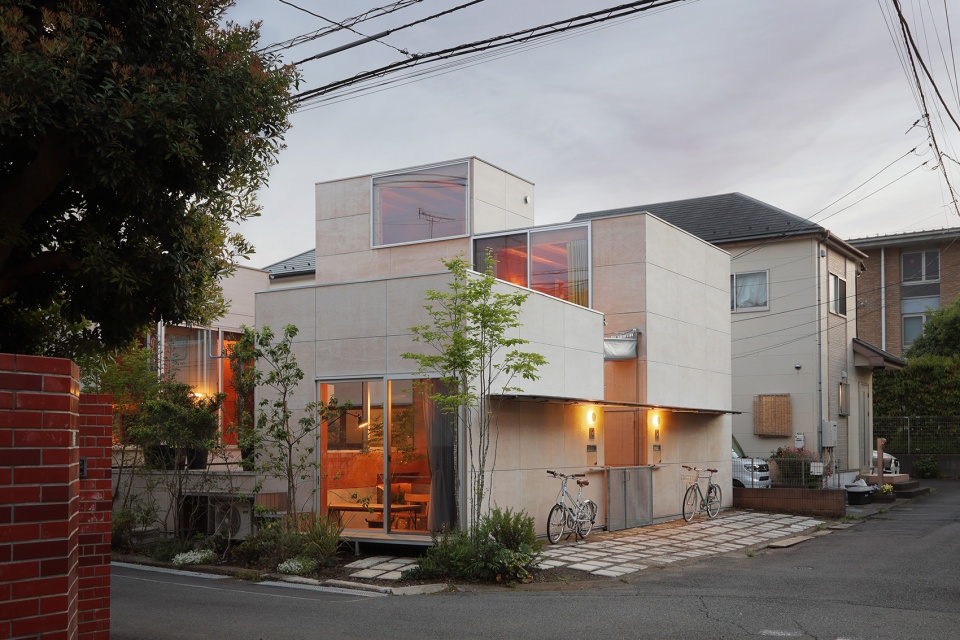
▼露台,terrace © Kai Nakamura
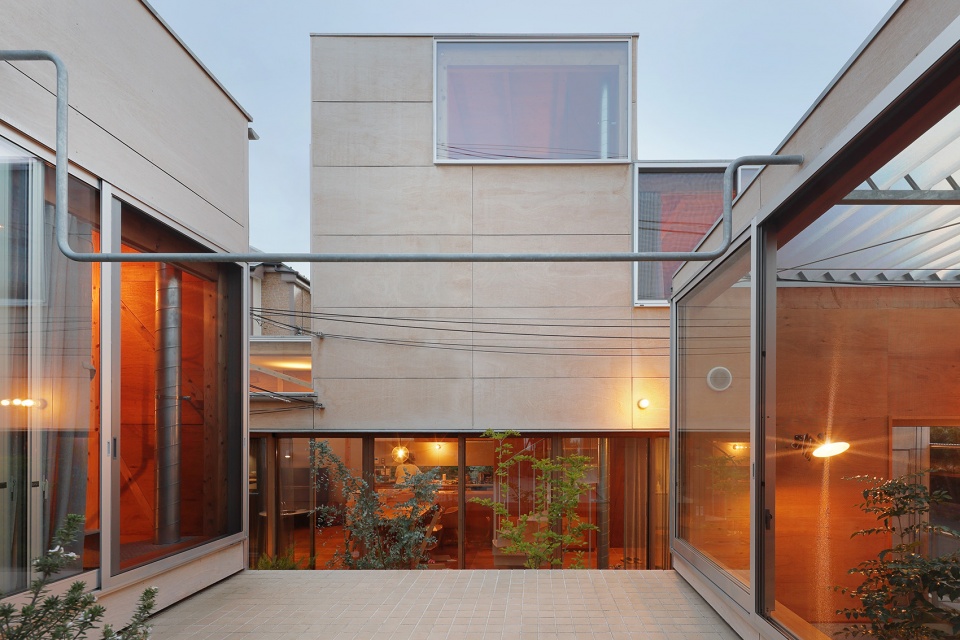
为了实现这一目标,建筑师沿场地的纵向划分了一道界限,并在两侧分别规划了一栋狭长的住宅。两栋住宅之间形成一条长约16米、宽约1.8米的小巷,并通往两栋住宅的入口。小巷既是通道花园也是缓冲区,保持了两个家庭之间的适当距离。
We divided a piece of land in the longitudinal direction and built a narrow house on each side. Between the two houses is an alley that is about 16 meters long and 1.8 meters wide and acts as an approach to the two houses. The alley is as a passage garden and a buffer zone that helps to maintain an appropriate distance between the two families.
▼住宅A沿街立面,facade along the street of House A © Kai Nakamura
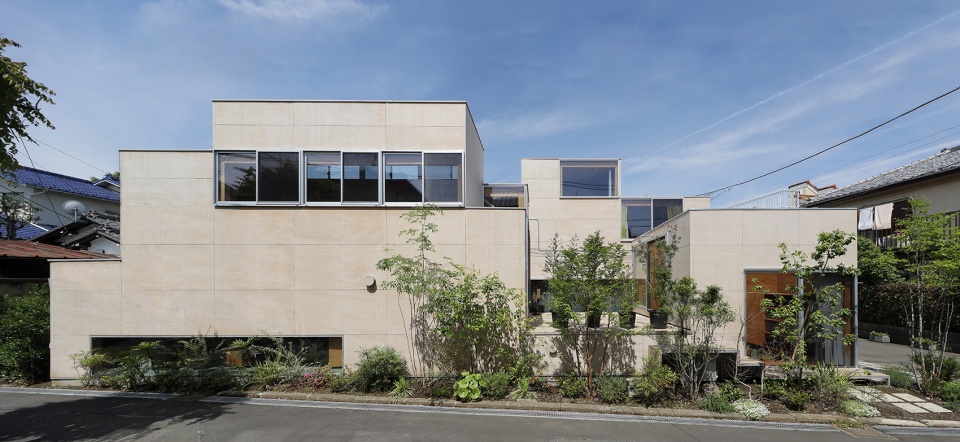
▼两座住宅之间的小巷,alley between two houses © Kai Nakamura
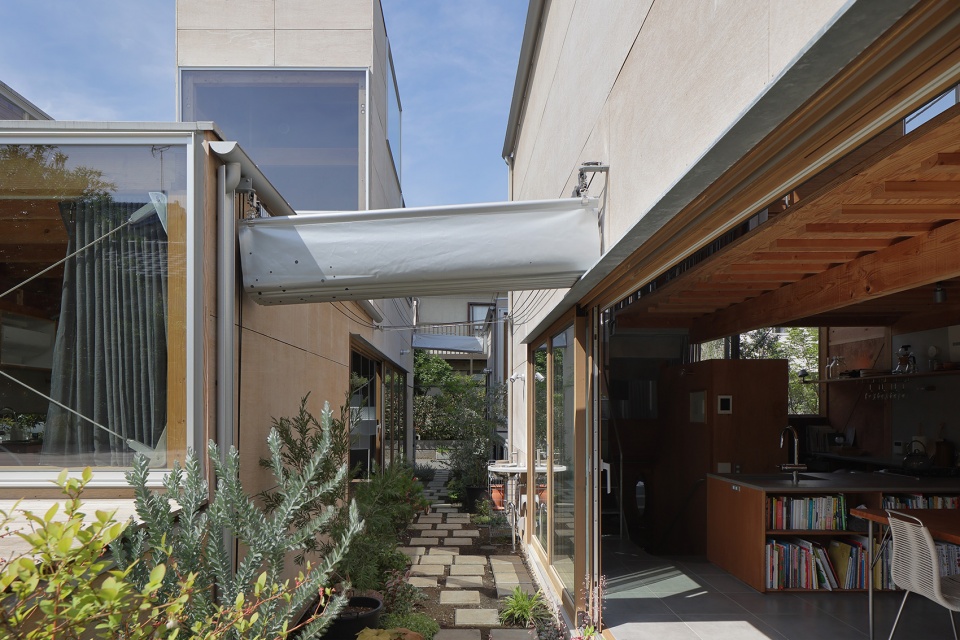
▼小巷上方的雨棚,canopy over the alley © Kai Nakamura
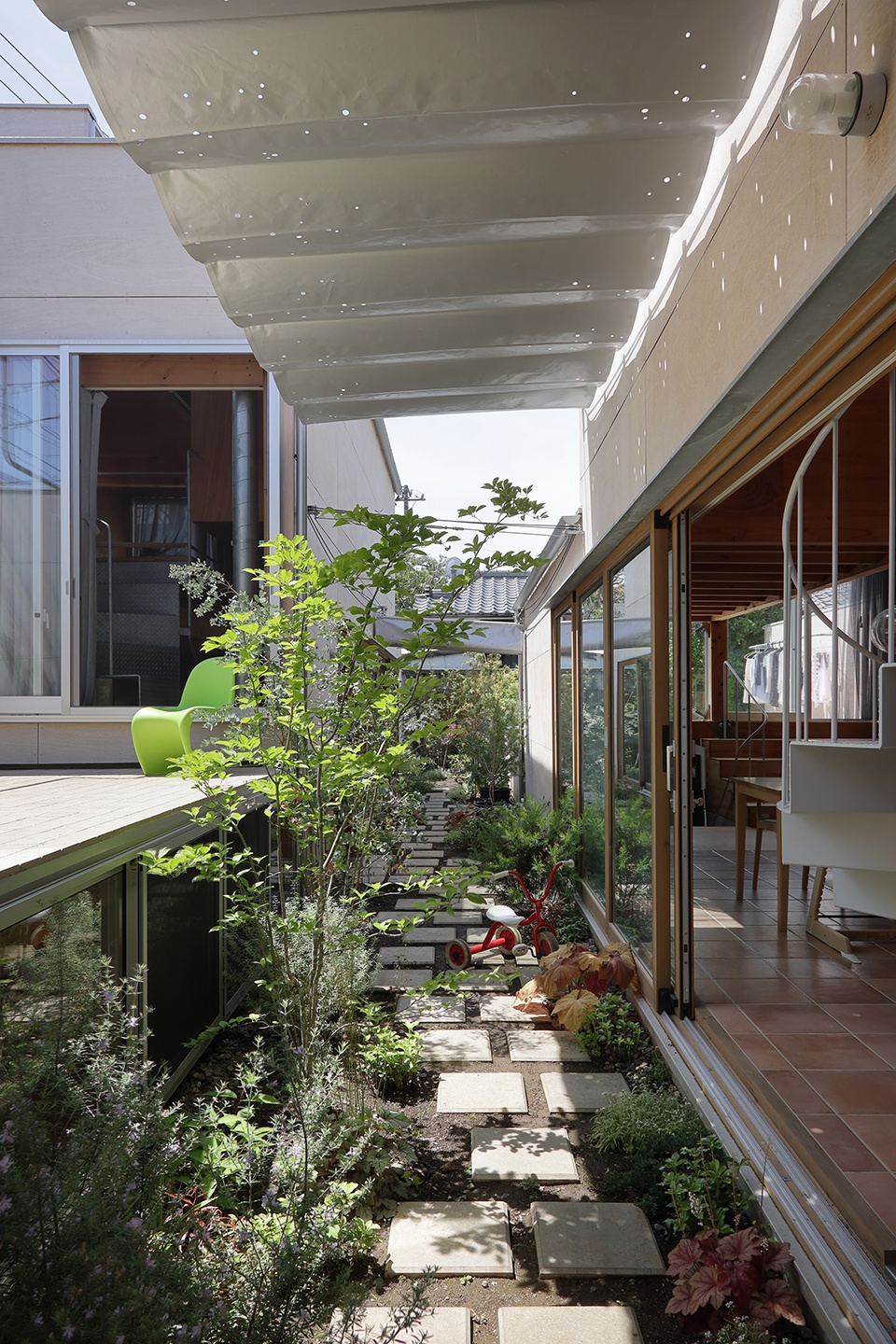
当上方的雨棚展开,将小巷中的植物与水盆保护于阴影之下,创造出更加亲密的氛围。每个家庭的成员都可以由小巷直接进出,无需经过各自住宅的出入口。小巷空间旨在成为一处起到过渡作用的中间区域,模糊室内外的界限。
With a tent that expands above and plants and a water basin, the alley allows members of each family to come and go directly without having to enter through their respective entrances. This space aims to be a vague intermediary zone that acts as part of the interior while also belonging to the outdoors.
▼模糊的室内外界限,
blurred boundaries between indoor and outdoor © Kai Nakamura
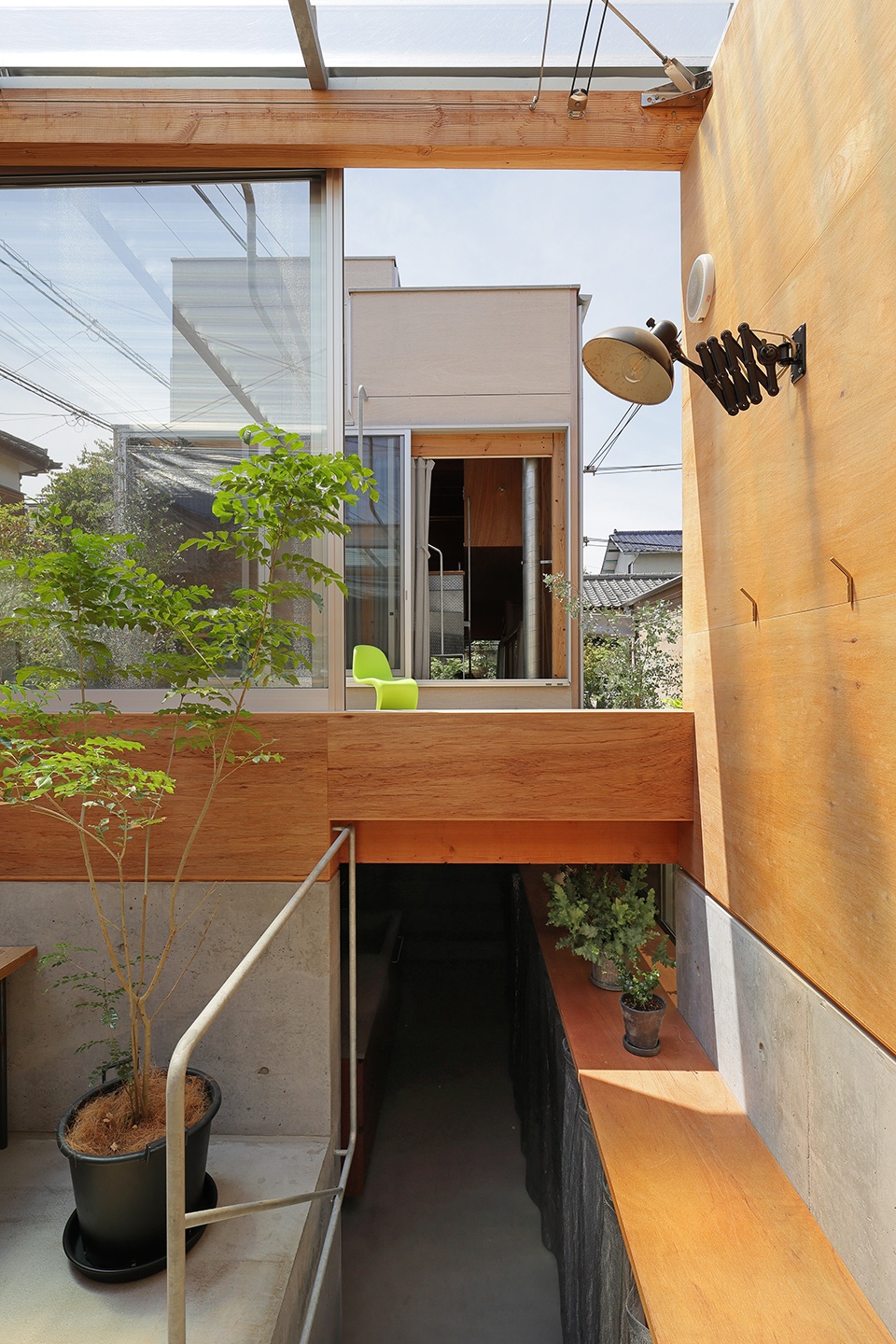
▼花园工作室,atelier © Kai Nakamura
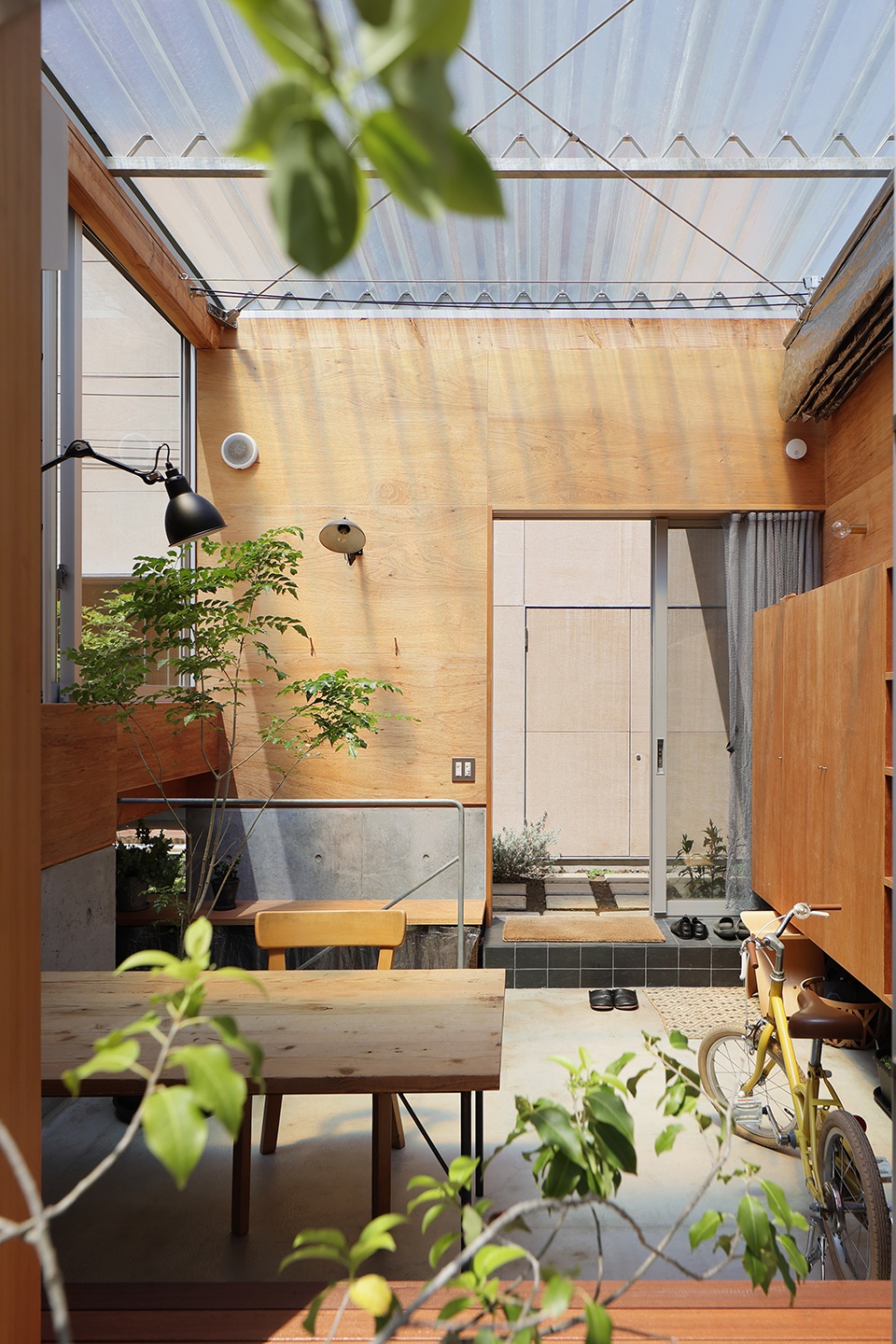
▼由地下室看小巷,viewing the alley from the basement floor © Kai Nakamura
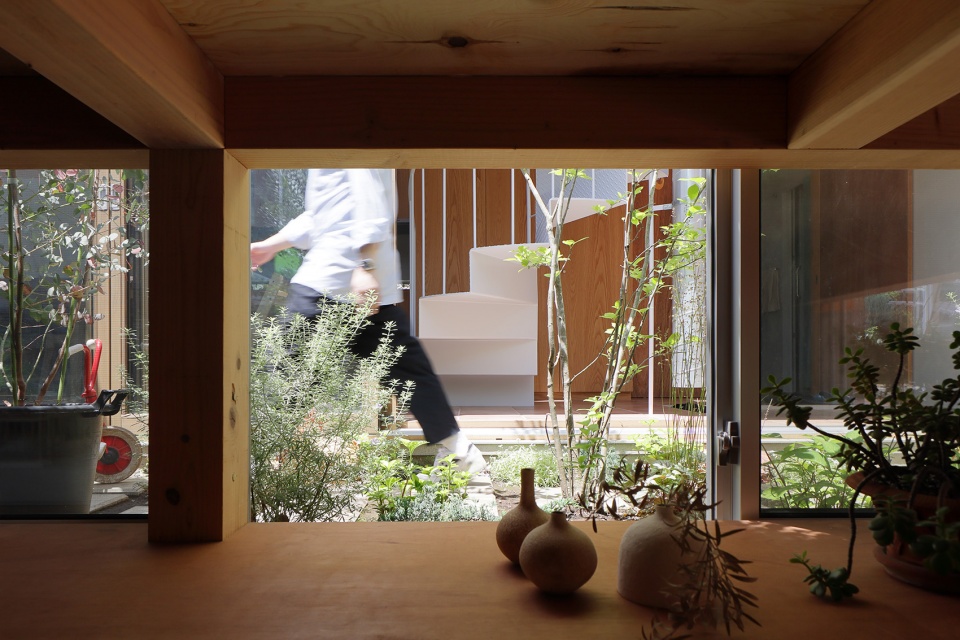
每栋住宅内部的空间都是连续的,宛如一个有着不同的楼层和屋顶高度的开放式房间。屋顶的高度经过了仔细的调整,以保证室内的隐私、景观视野,以及内部交通流线的顺畅,同时也将小巷中的光线引入室内,营造出良好的采光与通风环境。此外,建筑师还在不同方向上为住宅进行了开窗,以进一步创造出舒适的生活氛围。
Each building is a continuous space that acts as a single room that has various floor and roof levels. The roof level was carefully adjusted to allow for privacy, views, light into the rooms and alley, and ventilation. We also installed many windows in different directions.
▼室内空间概览,overall of interior © Kai Nakamura
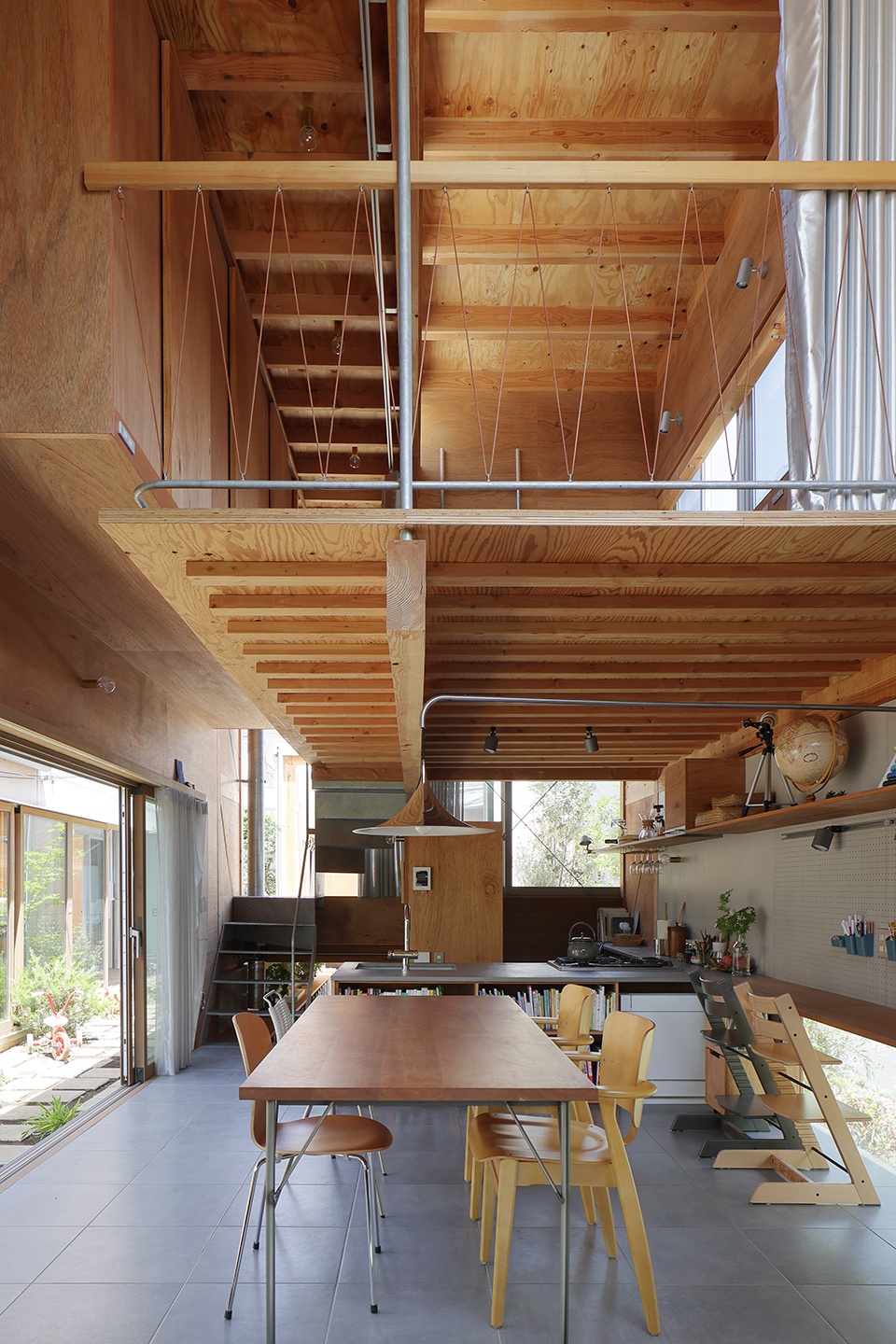
▼由室内看小巷,viewing the alley from interior © Kai Nakamura
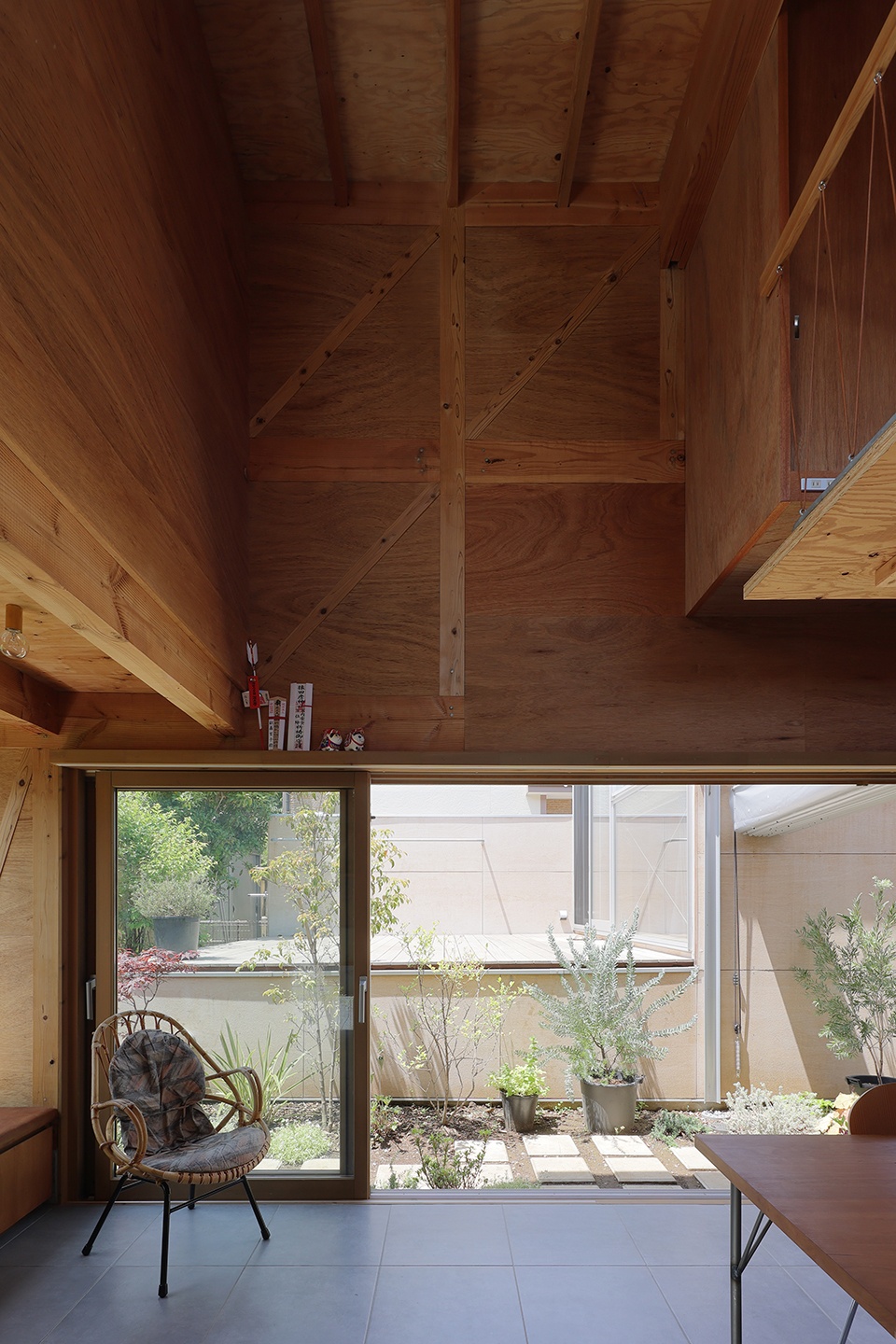
▼充满光线的生活空间,living space with bright nature light © Kai Nakamura
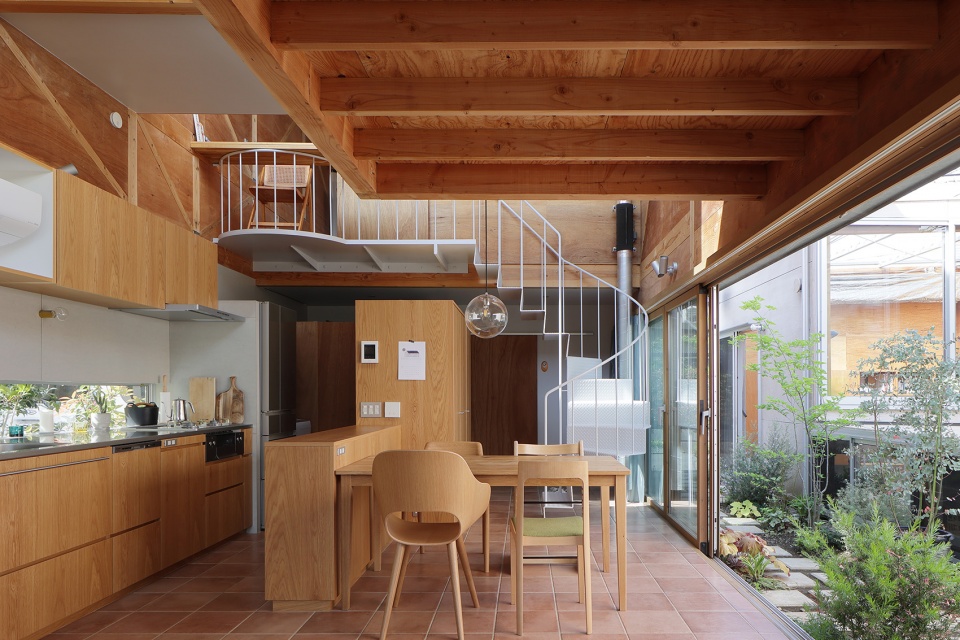
由于每栋住宅实际上都是由一个开放式的独立空间组成的,因此,屋内的人们仰头就可以望到天空,还可以看到彼此家的墙壁以及穿插在小巷中的露台。不同尺度的空间在住宅中被和谐地串联在一起,既有光线充足的公共区域也有昏暗温馨的私人空间。这个充满变化的不规则空间由纵向排布的多个木龙骨梁建造而成。
▼结构分析图,structure diagram ©UNEMORI ARCHITETS
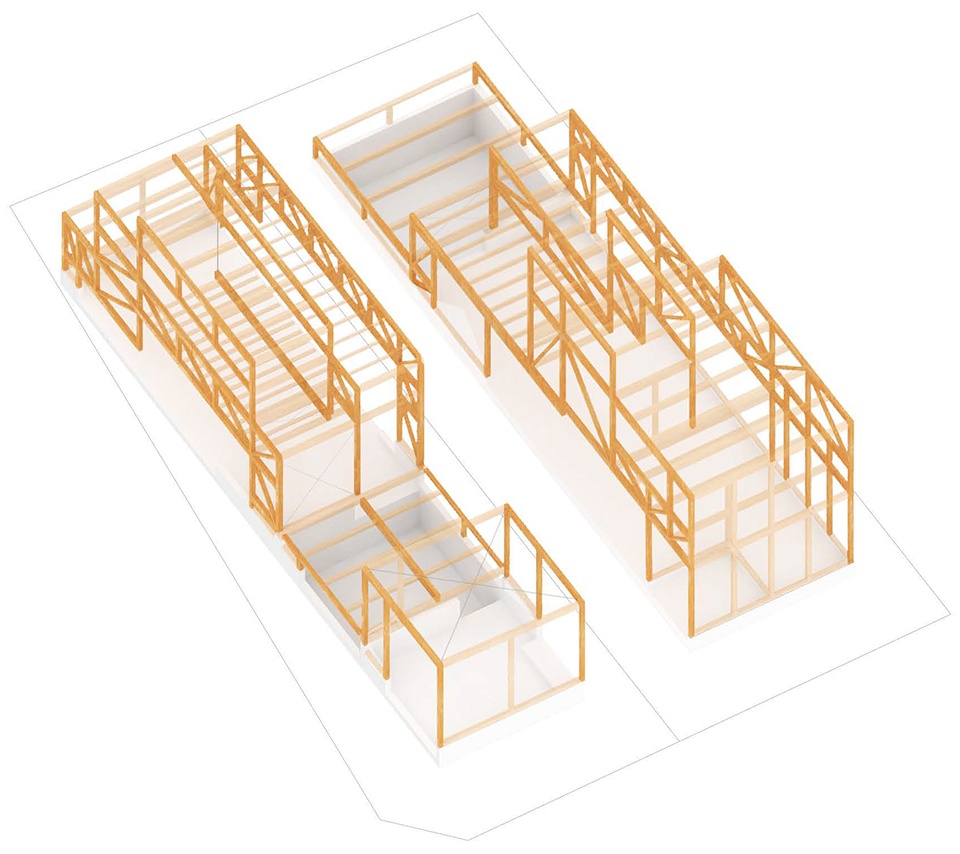
The house is a single large room that looks up to the sky, having views of each other’s wall surface and terrace across the alley, and containing both light and dark as it connects smaller spaces of various sizes. This convex-concave and irregular space was built using plural timber keel beams that are installed in the longitudinal direction.
▼高窗与天窗引入天空景观,
high windows and skylights introduce the sky landscape © Kai Nakamura
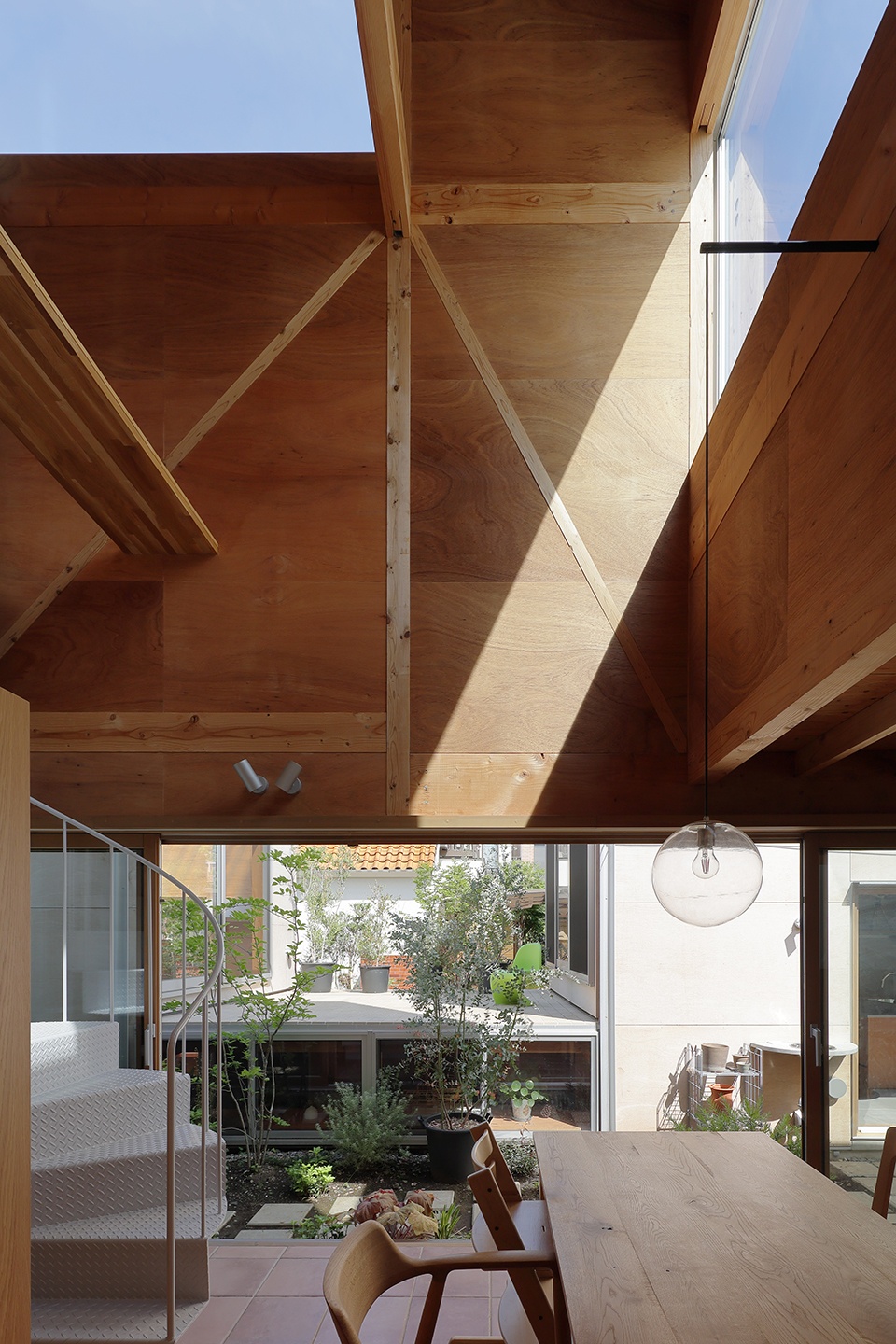
▼由二层看通高空间,viewing the atrium from the upper floor © Kai Nakamura
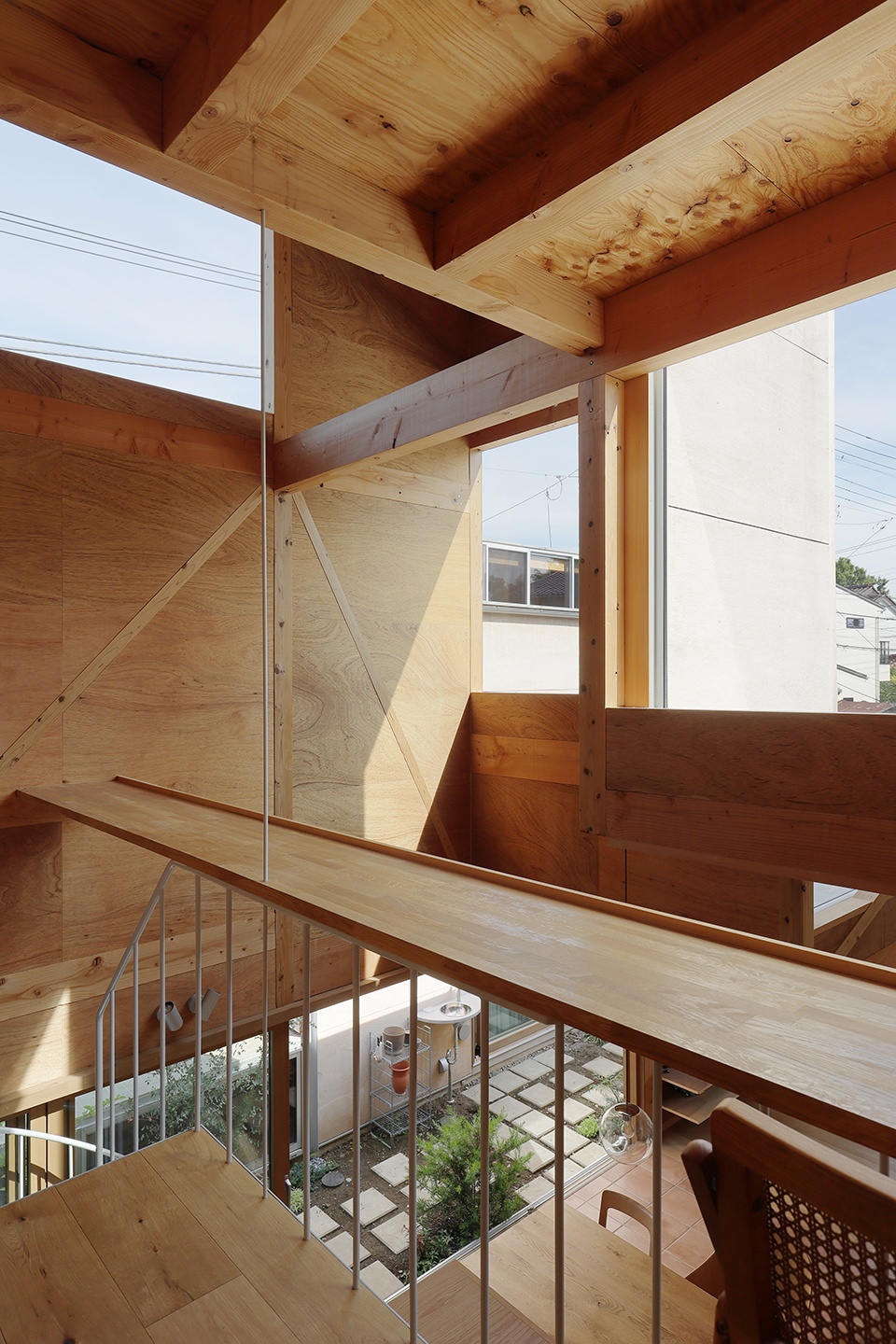
灵活且可扩展的空间形式,使人们的生活与情感能够延伸到建筑墙体的限制之外。设计的核心目标旨在通过将一系列小场景聚集在一起,来创造出连贯的生活与环境体验。
Extensible space makes our sense of life grow and expands beyond the physical area. Our goal is to create an environmental coherence by gathering small places together.
▼底层平面图,1st floor plan ©UNEMORI ARCHITETS
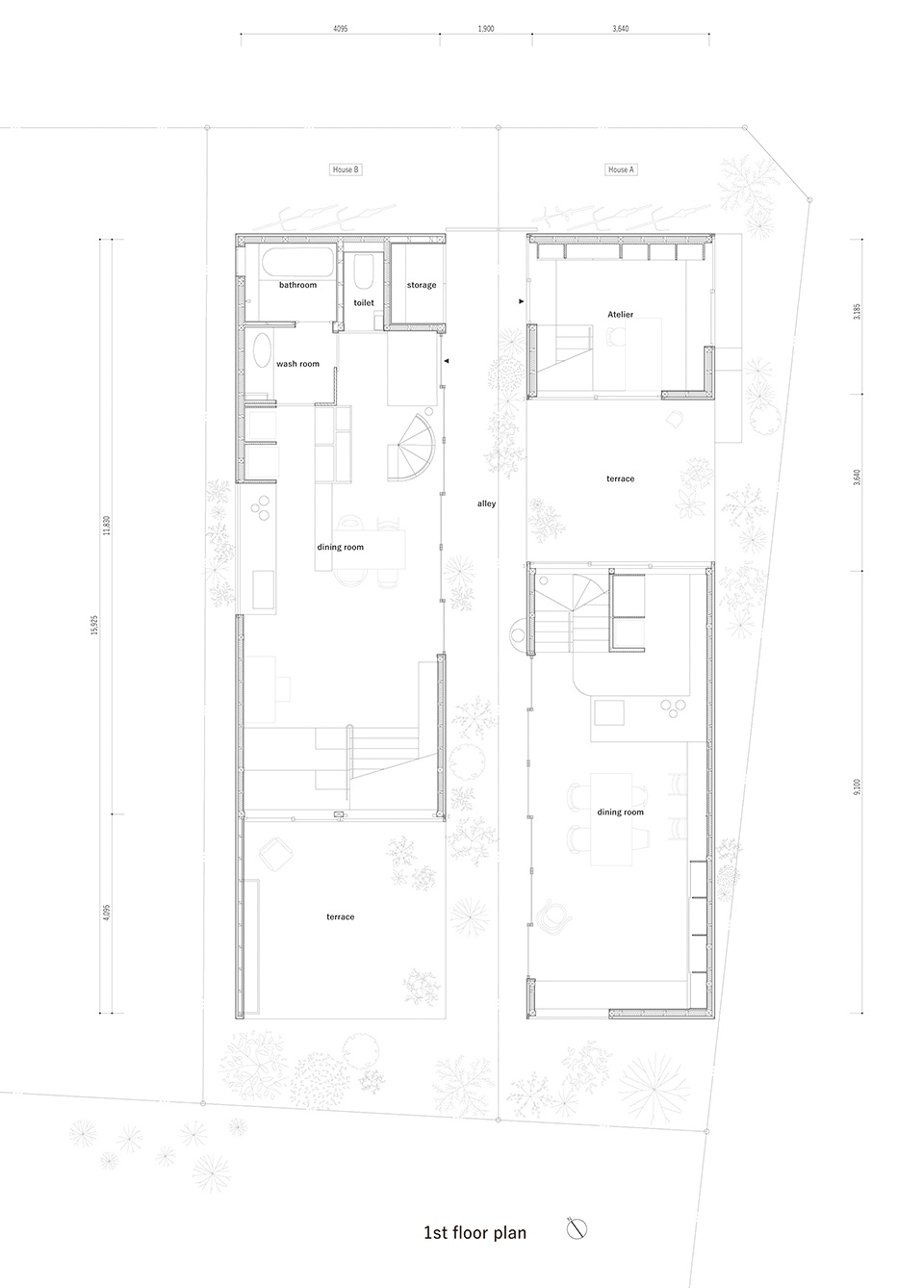
▼地下室与二层平面图,B1 and 2nd floor plan ©UNEMORI ARCHITETS
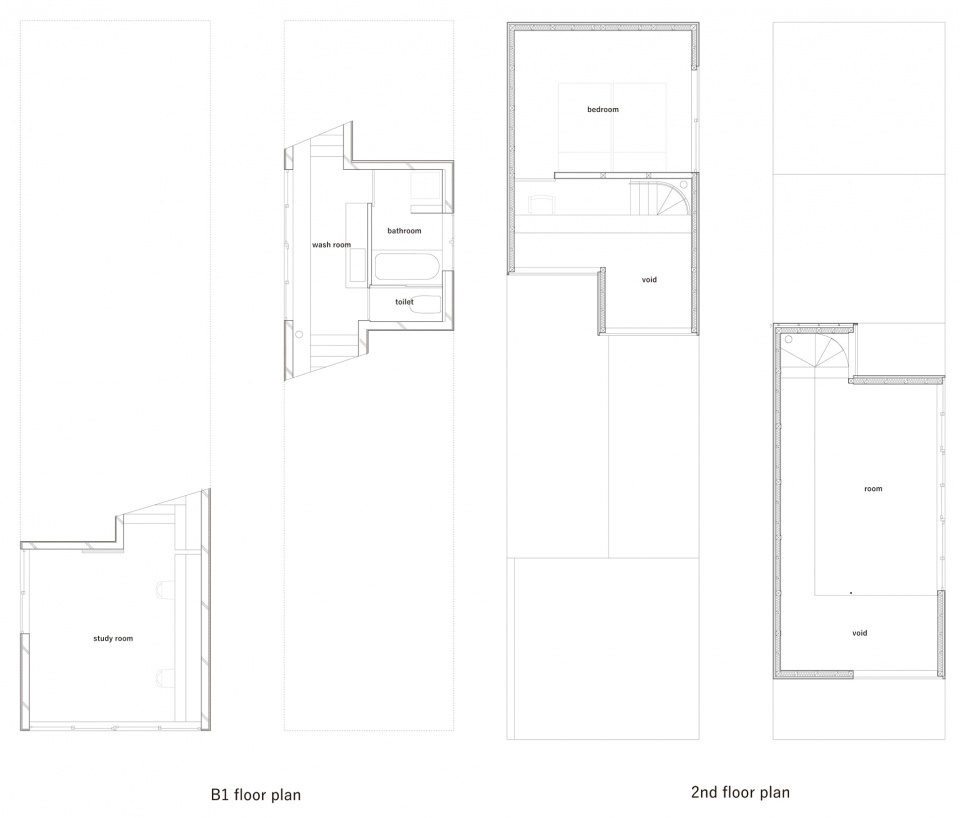
▼住宅A剖面图,section of House A ©UNEMORI ARCHITETS
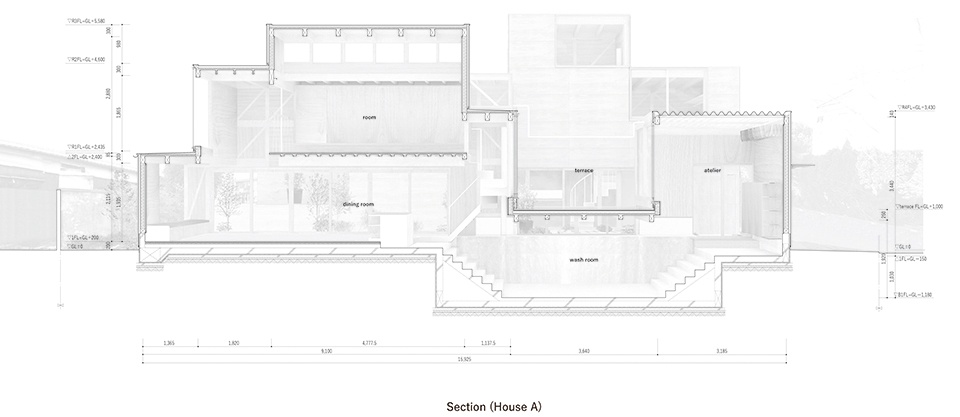
▼住宅B剖面图,section of House B ©UNEMORI ARCHITETS
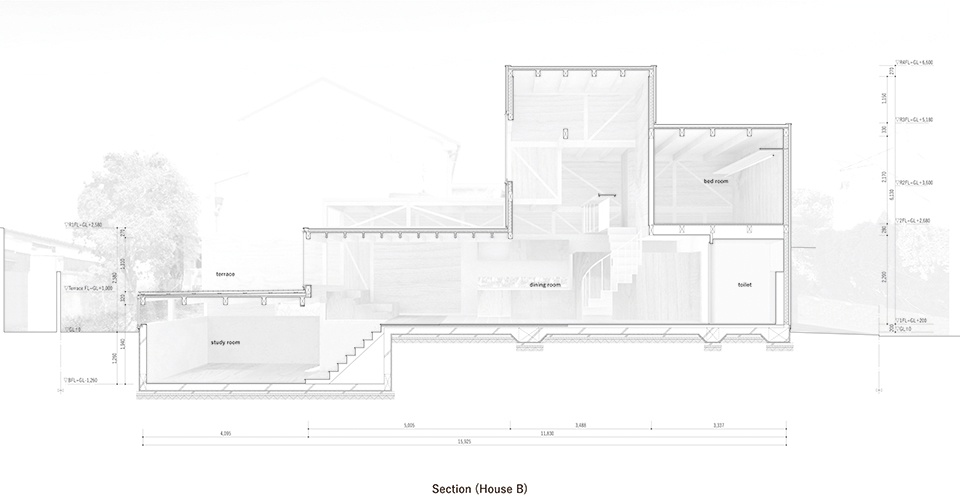
▼场地剖面图,sections of House A and B ©UNEMORI ARCHITETS
